Do you have a question about the TCL TAC-09CHSD/XPI and is the answer not in the manual?
| Brand | TCL |
|---|---|
| Model | TAC-09CHSD/XPI |
| Category | Air Conditioner |
| Language | English |
Instructions for ordering replacement parts, requiring model number, part name, and quantity.
Diagram showing the refrigeration cycle for cooling-only operation.
Diagram illustrating the refrigeration cycle for heat pump operation.
Explains remote controller buttons and operation modes, including initial settings.
Details various safety protection mechanisms for the electronic controller.
Describes the operation of the "Feel" mode, including initial temperature settings.
Explains compressor frequency control based on temperature differences and outdoor conditions.
Explains the operation of the DRY mode, including its cooling-based cycle and temperature settings.
Covers frequency control and indoor fan motor control for heating operations.
Explains the functions and automatic stop of the SLEEP mode.
Describes how to use the emergency operation switch for mode selection.
Details how to activate the auto-restart function that memorizes operation data.
Explains how error codes are displayed and handled, including sensor failures.
Lists failure types, LED codes, and digital LED codes for troubleshooting.
Lists protection types, function indicators, and digital LED codes.
Explains LED indicators on the outdoor unit for fault display.
Wiring diagram for indoor unit models TAC-09CHSD/XPI and TAC-12CHSD/XPI.
Wiring diagram for outdoor unit models TAC-09CHSD/XPI and TAC-12CHSD/XPI.
Wiring diagram for indoor unit models TAC-09CHSD/YA11I and TAC-12CHSD/YA11I.
Wiring diagram for outdoor unit models TAC-09CHSD/YA111 and TAC-12CHSD/YA111.
Exploded view and parts list for the TAC-09CHSD/XPI indoor unit.
Exploded view and parts list for the TAC-09CHSD/XPI outdoor unit.
Exploded view and parts list for the TAC-12CHSD/XPI indoor unit.
Exploded view and parts list for the TAC-12CHSD/XPI outdoor unit.
Exploded view and parts list for the TAC-09CHSD/YA11I indoor unit.
Exploded view and parts list for the TAC-09CHSD/YA111 outdoor unit.
Exploded view and parts list for the TAC-12CHSD/YA111 indoor unit.
Exploded view and parts list for the TAC-12CHSD/YA111 outdoor unit.
Safety guidelines for installing the air conditioner, covering electrical safety and professional installation.
Safety advice for users regarding operation, maintenance, and potential hazards.
Lists prohibitions and safety rules to prevent damage and injury during use.
Identifies key parts of the indoor unit with corresponding numbers.
Identifies key parts of the outdoor unit with corresponding numbers.
Details on connecting pipe length and connecting cables for installation.
Guides on first-time installation for indoor and outdoor units, including placement.
Steps for installing the mounting plate and drilling a wall hole for piping.
Details on making electrical connections for the indoor unit.
Covers refrigerant piping connection and connecting pipes to the indoor unit.
Importance and method of setting up the indoor unit's condensed water drain hose.
Steps for outdoor unit electrical connections and pipe connection.
Procedure for bleeding air and humidity from the refrigerant circuit.
Diagram of the outdoor control system, detailing unit functions and communication.
Identifies key components and functional blocks on the Outdoor Unit's Printed Circuit Board.
Illustrates the physical connections of various components to the Outdoor Unit's PCB.
Diagram showing the flow of power and signals between units and compressor.
Troubleshooting steps for various error codes (E1, E2, E6).
Troubleshooting for E3/E7 errors, covering sensor connections, damage, and PCB issues.
Troubleshooting for E8 errors, focusing on outdoor discharge pipe sensor connections and damage.
Troubleshooting for E0/E5 errors, related to communication damage and voltage checks.
Troubleshooting for EA errors, related to current sensor faults and refrigerant leakage.
Troubleshooting for E9 errors, indicating outdoor PCB drive circuit damage.
Troubleshooting for EU errors, indicating voltage sensor damage.
Troubleshooting for EE errors, indicating EEPROM faults.
Troubleshooting for CL errors, caused by dirty air filter or unit operation time.
Flowchart to diagnose compressor startup issues and DC overcurrent errors.
Flowchart for troubleshooting DC overcurrent errors, checking valves, IPM, sensors.
Flowchart for troubleshooting E0/E5 errors, involving wire connections, PCB checks, and voltage tests.
Table listing temperature vs. resistance and voltage for indoor/outdoor sensors.
Table detailing temperature vs. resistance for outdoor unit sensors.
Overview of R32/R290 refrigerants, their properties, and installation safety.
Formulas and tables for calculating required room area based on refrigerant charge.
Principles for site safety, operation safety, and static electricity precautions during installation.
Focuses on site safety, operation safety, and static electricity awareness.
Checks for maintenance environment, equipment, and air conditioner status.
Details checking maintenance equipment, including leak detectors and professional tools.
Checks the air conditioner's ground connection and warning labels.
Procedures for performing leak detection before starting maintenance work.
Safety guidelines for maintenance, including ventilation and fire prevention.
Specifies requirements for the maintenance location, including ventilation and safety zones.
Guidelines for filling refrigerants, including system clearing and cross-contamination.
Procedures and precautions for welding during maintenance.
Steps for maintaining electrical components and checking safety functions.
Procedures for handling emergency situations like combustible refrigerant leaks.
Continues emergency handling with evacuation, alarm calls, and site clearing.
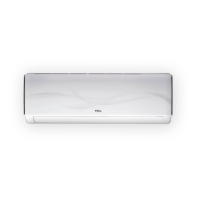
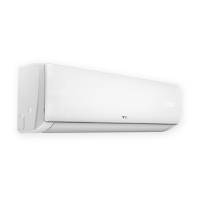




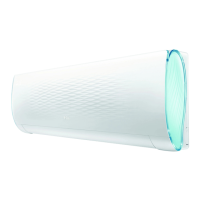

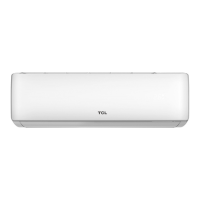
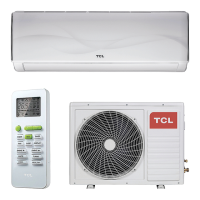


